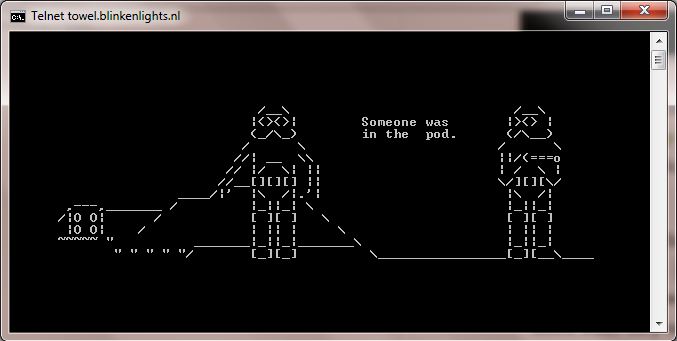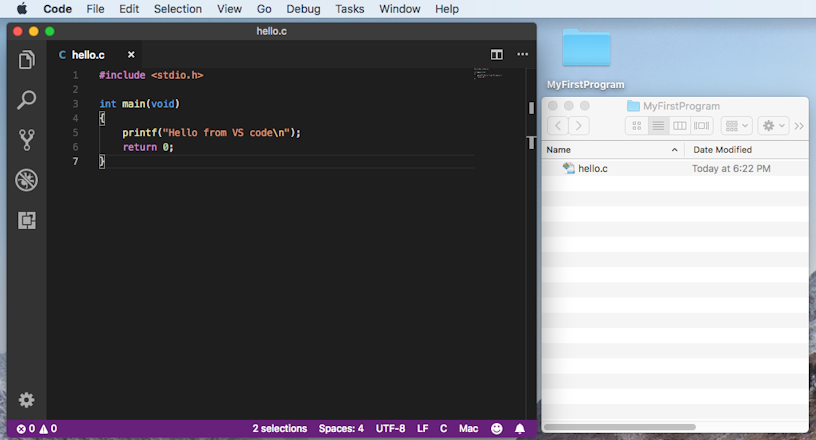Shell commands will run without trouble and you will be able to use a few select apps Linux apps too though you would benefit more from a macOS version of them if they’re available. The example script we gave to test this process will simply display text in the Terminal but the script you want to run is going to do something else and may need. Because Mac OS X ships with J2SE 1.4.1 and J2SE 1.3.1, you can distribute your application as class files or jar files and - in theory - your customer could run your application from the Terminal application. Running a windows app from terminal in Mac is more complicated than on Linux because a series of environment variables must be passed to the terminal before the app can be successfully launched. For this reason, Crossover's ProgramsRun Command menu has an 'Open Shell' button, which you'll find the 'Debug Options' listing. Carbon Applications Older Carbon applications have to be run via LaunchCFMApp because they are in the wrong binary format for Mac OS X, so LaunchCFMApp handles the necessary translation. To launch a Carbon application directly (without using open), one has to actually run LaunchCFMApp, giving it the application as an argument.

Terminal is not for mere mortals, you're probably thinking. It's a kind of a sacred knowledge that only geeks and Mac geniuses possess. But if you get through your first command line you'll find it's not that terrifying. In fact, using Terminal is like applying Harry Potter wizardry to your tasks. Once you know the right spells you can break any laws of how applications behave and do some unbelievable things that even the most experienced Mac people can't. Isn't it seducing to try?
We've chosen just a few of Terminal's most impressive features. For more serious take on Mac terminal commands, check out this article. Okay, are you ready to type in your first code? To start the journey, learn how to open Terminal app on Mac: Click Launchpad and then type Terminal in the search bar.
1) Make your Mac talk to you
One of the simplest commands which can be very fun, especially when you are planning a prank on somebody. Just type any text in Terminal and your computer will speak it in your Mac's default voice. But there's about 20 voices and intonations to choose from plus the ability to convert an entire text file into speech. So here's a slick audiobook maker at your hand.
Open up Terminal, type in:
say followed by a space and any text you want to hear
2) Customize Login Message
This is what makes Mac more personal and humanized. For example, you can write an inspirational motto or helpful information for other users, if it's a public library computer. It might even be a way to retrieve your MacBook if you lose it — if you set a login message with your contact information. Once again there's much room for pranking other people, but we won't go deep into that.
Open up Terminal, type in:
sudo write /Library/Preferences/com.apple.loginwindow LoginwindowText 'Custom Text Here'
3) Watch Star Wars in Terminal app
In Terminal symbols, of course. This could be the greatest trick which makes no particular sense, but even if just for the coolness alone you should try it. The Death Star, R2D2, spaceships and the rest of the Episode 4 story retold in Terminal graphics will blow your friends away at the party. And there is no sound by the way.
Open up Terminal, type in:
telnet towel.blinkenlights.nl
On macOS Sierra and higher macOS versions, you should use a different command:
nc towel.blinkenlights.nl 23
4) Show hidden files in Finder
This isn't as funny as the previous one, but searching for important files is no joke. With this command, you'll be able to see everything on your Mac, even files which were omitted from standard display.
Open up Terminal, type in:
defaults write com.apple.finder AppleShowAllFiles TRUE
killall Finder
This should summon Finder with previously hidden files shown grayed out.
To reverse this operation (be aware that you may be swamped with lots of irrelevant system files) just substitute TRUE for FALSE in the command line above:
defaults write com.apple.finder AppleShowAllFiles FALSE
killall Finder
5) Pay a visit to a psychiatrist
Funny Mac terminal commands are many. This is a classic Easter egg type of joke macOS developers are famous for. When you're feeling stressful, talking to friendly chatbot will at least make you smile. Strangely enough, this therapy may be actually working because you are asked to verbalize your emotions, by giving them a closer look. And the psychiatrists (the real ones) will confirm that sometimes it works.
Open up Terminal, type in:
emacs and then hit Return. Press Esc, then x, and finally type doctor
6) See iTunes songs notification via Terminal app
A clever addition if you normally work with the music on the background. If you fell in love with a particular track from your playlist you don't need to open iTunes to find out the artist's name. It will pop up on your Mac Dock from now on. Though a bit strange this feature isn't included by default because it's really a timesaver.
Open up Terminal, type in:
defaults write com.apple.dock itunes-notifications -bool TRUE
Close the dock using the following command:
killall Dock
7) Play simple games
This is another retro cool feature to cheer you up once in a while. You can play Tetris, Pong, Snake and a dozen of other arcade games. Once you have unlocked these nice hidden toys, you'll surely get to love your Mac more. Prepare to use your arrow keys.
Open up Terminal, type in:
emacs. Press Enter to open it up, press Esc then x. Now you have to type the name of the particular game and that's it.
Game names:
How To Run An App From Mac Terminal Space
- tetris
- pong
- snake
- solitaire
- 5x5
- landmark
- doctor
What you learn from using Mac Terminal commands is that nothing is really impossible if you're on a Mac. But it's better to start your Terminal experience with these funny little tricks and then go to something serious. This program has a nearly infinite number of magic spells to choose from.
8) Make your Mac faster and more responsive

Okay, this has nothing to do with Terminal. But who wouldn’t want their MacBook as speedy and efficient as back then, on its first day? Surprisingly, this can be achieved easily, Terminal-style way — with aid of CleanMyMac X.
- Remove up to 74 GB of junk from your Mac
- Uninstall unwanted apps completely
- Speed up Mac with maintenance scripts
- Fully clean browsers and messengers
Download the app from developer’s site for free
Hope you found this article helpful, stay tuned for more!
These might also interest you:
Terminal User Guide
You can use the command-line environment interactively by typing a command and waiting for a result, or you can use the shell to compose scripts that run without direct interaction.
Execute commands in the shell

In the Terminal app on your Mac, enter the complete pathname of the tool’s executable file, followed by any needed arguments, then press Return.
If a command is located in one of the shell’s known folders, you can omit path information when entering the command name. The list of known folders is stored in the shell’s PATH environment variable and includes the folders containing most command-line tools.
For example, to run the ls command in the current user’s home folder, enter the following at the command prompt, then press Return:
To run a command in the current user’s home folder, precede it with the folder specifier. For example, to run MyCommandLineProg, use the following:
% ~/MyCommandLineProgTo open an app, use the open command:
When entering commands, if you get the message command not found, check your spelling. Here’s an example:
% opne -a TextEdit.app zsh: opne: command not foundTerminate commands
In the Terminal app on your Mac, click the Terminal window that is running the command you want to terminate.
Press Control-C.
This sends a signal that causes most commands to terminate.
Repeat previously entered commands
The commands you enter during a session are saved so you can repeat a previously used command without retyping it.
In the Terminal app on your Mac, press the Up Arrow key.
The last command you entered appears on the command line.
Continue pressing the Up Arrow key until you see the command you want, then press Return.